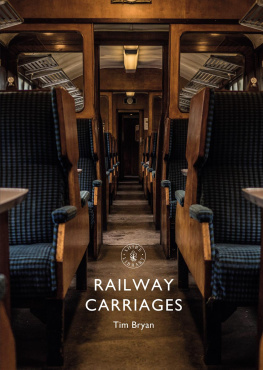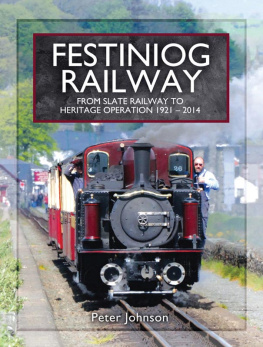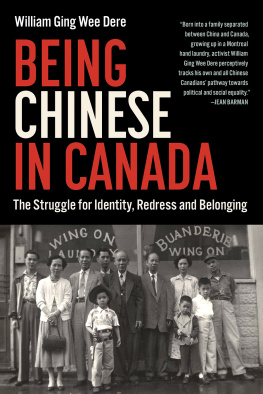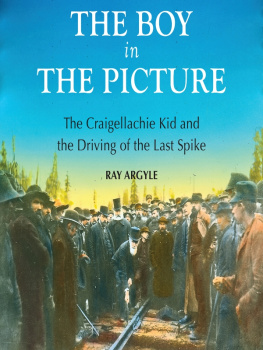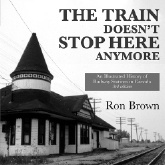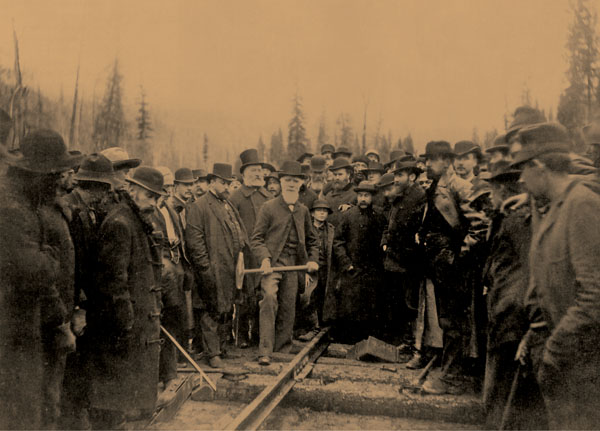
For Pat and Gord
Copyright 2020 David Laurence Jones
Foreword copyright 2020 Doug Cass
All rights reserved. No part of this publication may be reproduced, stored in a retrieval system, or transmitted in any form or by any meanselectronic, mechanical, audio recording, or otherwisewithout the written permission of the publisher or a licence from Access Copyright, Toronto, Canada.
Heritage House Publishing Company Ltd. // heritagehouse.ca
Cataloguing information available from Library and Archives Canada
978-1-77203-349-6 (pbk) // 978-1-77203-350-2 (ebook)
Edited by Warren Layberry
Proofread by Lara Kordic
Cover and interior design by Jacqui Thomas
Ebook by Alexandra Santos
Cover images: Jacqui Thomas (front) and High Level Bridge, Lethbridge, Alberta (Author's Collection) (back)Section opener illustrations by Jacqui Thomas. Illustration on page 72 is based on the photo on page 126 (Omer Lavalle in CPR steam locomotive, Omer Lavalle Collection)
Heritage House gratefully acknowledges that the land on which we live and work is within the traditional territories of the Lkwungen (Esquimalt and Songhees), Malahat, Pacheedaht, Scianew, TSou-ke, and WSNE (Pauquachin, Tsartlip, Tsawout, Tseycum) Peoples.
We acknowledge the financial support of the Government of Canada through the Canada Book Fund (CBF) and the Canada Council for the Arts, and the Province of British Columbia through the British Columbia Arts Council and the Book Publishing Tax Credit.




Foreword
It gives me great pleasure to write this foreword for David Laurence Joness new book on the history of the Canadian Pacific Railway. My association with David began in 2012, when he and some of his colleagues from the National Dream Legacy Society approached the Glenbow Museum with an offer to volunteer in some way that could advance the preservation of CPR history. I was the director of the library and archives at the time and was happy to oblige. I am glad I did, for that began a seven-year association with David, Doug Phillips, and Don Heron, all three of whom brought immense knowledge of the history of Canadian railways to the museum and worked on a succession of projects benefiting Glenbow and future researchers.
The library and archives at Calgarys Glenbow Museum was a major regional collection of non-governmental publications and historical records documenting the development of southern Alberta and the Canadian West. A key priority from the beginning was the collection of company records, and as a result, for half a century, it has been one of the largest business archives in Canada. Among the earliest major acquisitions were the files of the Canadian Pacific Railway Department of Natural Resources, which was established in Calgary in 1912 and dealt with a host of company undertakings other than the actual operation of the railway, such as land sales, irrigation development, coal mining, and the promotion of immigration to the Canadian West. Over the years, the archives acquired nearly three hundred other archival collections dealing with the railway, and the library accumulated strong holdings of CPR publications, including the library of former CPR president DAlton Coleman. All of this material is now available through the Glenbow Western Research Centre at the University of Calgary.
Through its work on a number of major exhibitions, Glenbow has had a long association with the railway. In the early 1980s, archivists Bill McKee and Georgeen Barrass developed a major exhibition on the history of the CPR in Western Canada and received extensive assistance from Omer Lavalle and the staff of the CPR archives. That exhibition ultimately resulted in a book Trail of Iron (Douglas & McIntyre, 1983) as well as a major conference on CPR history that led to the book The CPR West: The Iron Road and the Making of a Nation (Douglas & McIntyre, 1984). Portions of the Trail of Iron show were also on permanent display in the museum until 2007, when Glenbow re-developed all of the history galleries with the show Mavericks: An Incorrigible History of Alberta. That exhibition included a gallery on railway history focusing on several individuals, including William Van Horne, William Pearce, and Mary Schaeffer. Glenbow returned to the analysis of the impact of the railway in the 2009 exhibition Vistas, curated by prominent art historian Roger Boulet. That exhibit also resulted in book, this one put out by the archive itself in 2010 entitled Vistas: Artists on the Canadian Pacific Railway.
David and his colleagues noticed early on that the photograph identification in Glenbows online photo catalogue was incomplete or erroneous, so their first project was to update the information for several thousand images, some of which appear in this book. They also encouraged others to donate a number of archival collectionsincluding Floyd Yeats and Ray Matthewsand worked diligently to catalogue these photos, which spanned the whole history of the railway. Glenbow also received a number of large donations of plans and drawings of CPR structures and equipment, many saved by Doug Phillips, which led to several other arrangement and description efforts. Their unique knowledge of railway history also helped Glenbow staff answer dozens of research inquiries over the years.
It is only fitting that Railway Nation is able to draw as heavily as it does from the photographic archives of the Glenbow Museum after the excellent contributions of David Laurence Jones and his colleagues helped make the collection what it is today.
Doug Cass Director, Library and Archives at Glenbow Museum
Preface
The stories in Railway Nation: Tales of Canadian Pacific, the Worlds Greatest Travel System were largely inspired by my early years at Canadian Pacific, when I worked in the companys Corporate Archives, which was part of the department of Public Relations & Advertising (later Communications & Public Affairs).
The Canadian Pacific Corporate Archives collection was established in 1974, more than ninety years after the incorporation of the companyso we had a lot of catching up to do.
At the time, a number of factors contributed to the decision to start a formal archival program. The primary function of the companys Windsor Station headquarters building was on the wane, with fewer and fewer train arrivals and departures using the Montreal terminal facility. Much of the vault space below the station was being refurbished for uses other than storage. While many records were being microfilmed and then discarded, some original materials were retained for their intrinsic and historic value. The CPR presidents vault, as well as those assigned to the company secretary and the legal department, was rediscovered to contain letters, engineering plans, advertising items and other materials of great historic interest, dating back to the railways formative years in the 1880s.
Next page


